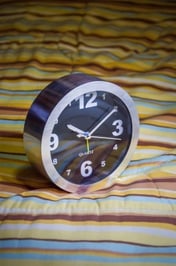Some time ago I looked at the often dreadful customer service offered by FMCG and Telecoms companies in CEE. Of course, this avoidable malaise is not restricted to that part of the world. After being in UK for a few weeks I have experienced really poor service from organisations you would think had top notch, high performing supply chains.
The Royal Mail and all those “black and white cat” types will be the subject of a later blog but first in line for critique is the National Health Service.
The NHS in the UK is a precious gem and really is the envy of most other countries where credit cards have to be produced before you hear the Marigold’s snap on. The NHS is supported by a seriously complex, unpredictable and volatile supply chain. On this occasion supply chain certainly includes the provision of medical supplies, equipment, foods to multiple locations around a hospital site. (I am tempted to bang on about the quality food or to be more exact, the amount of wasted food as most of what I see is not going to win any awards.)
My bone of contention with NHS service is about beds, the availability of which is a constant battle which is seemingly never won. Operations are regularly postponed when there are no beds available for post-op recuperation. Yes, some beds are certainly blocked by long term patient residents but my observations suggest there are actually many beds woefully under utilised. To alleviate the problem, I am certainly not suggesting bed sharing which does occur elsewhere. (I have personally seen a single bed with 4 occupants at the same time in a certain country.)
While it is important patients are treated with the utmost dignity and with the best care in the world I think NHS bed availability would be improved if patients were considered as SKU’s on a supermarket shelf. Just take the emotion away for a moment and consider how this might work.
Each bed is shelf in a shop and the optimum situation is to see all these shelf locations full and more importantly, replenished as soon as stock (patients) moves off the shelves (beds). As with transferring stock from the Lidl back of store to gondola ends, this should not be rocket science. And quite right too as long as decisions are made in the optimum sequence and information is in full flow.
Admittedly based on my massive sample of 1 hospital, I see the following sequence of activities:
 1. Patient gets ready to leave and sits in a chair waiting for discharge.
1. Patient gets ready to leave and sits in a chair waiting for discharge.- 2. Nothing happens at the bed.
- 3. A patient leaves the bed and is discharged.
- 4. Nothing happens at the bed.
- 5. The bed is stripped and all cups, jugs etc. are removed.
- 6. Nothing happens at the bed.
- 7. Bed and surrounding area are cleaned and the bed re-made.
- 8. Nothing happens at the bed.
- 9. Eventually, a new patient arrives to fill the bed but this can be several hours and often overnight, after the vacancy was first identified.
Just a little bit of basic demand and supply forecasting plus timely information transfer would see a far higher utilisation of available bed space and over the period of a year, noticeably shorter waiting times.
Ok, so I know little about the intricacies of the NHS and maybe other hospitals are slicker in their bed allocation but I feel it is a huge opportunity. A change in mindset and a willingness to learn from other supply chains could prove invaluable. I did offer my services to look at this acute bed shortage problem and was welcomed as long as I had previous experience of working within the NHS…….
Isn’t that the problem? If you are not open to new ideas and innovative solutions, you will get nowhere while the NHS wastes money on incestuous internal studies and reviews. Remember Einstein, who probably did have good knowledge of rocket science; “Insanity: doing the same thing over and over again and expecting different results.”
Image courtesy of Suriya Kankliang at freedigitalphotos.net







